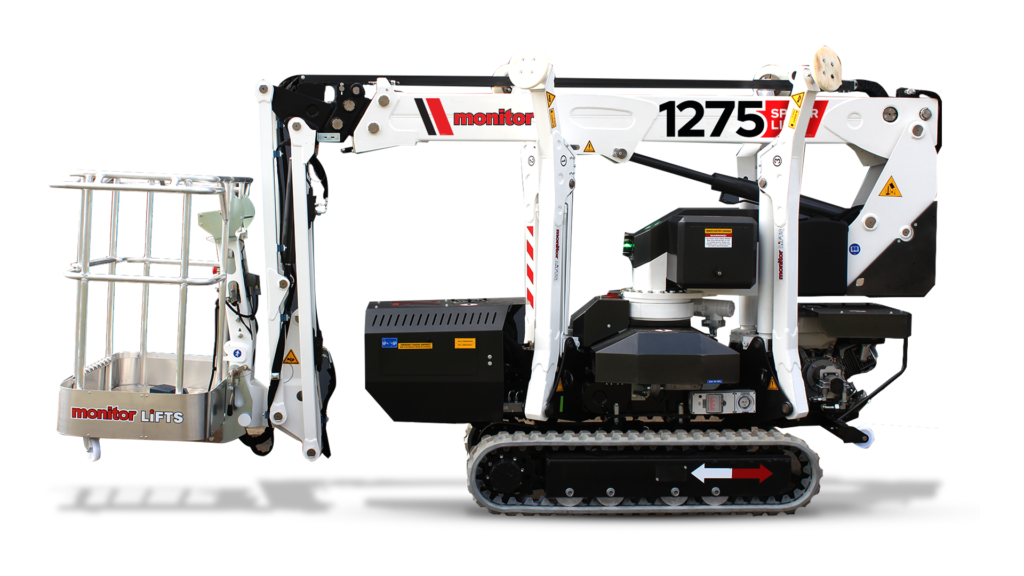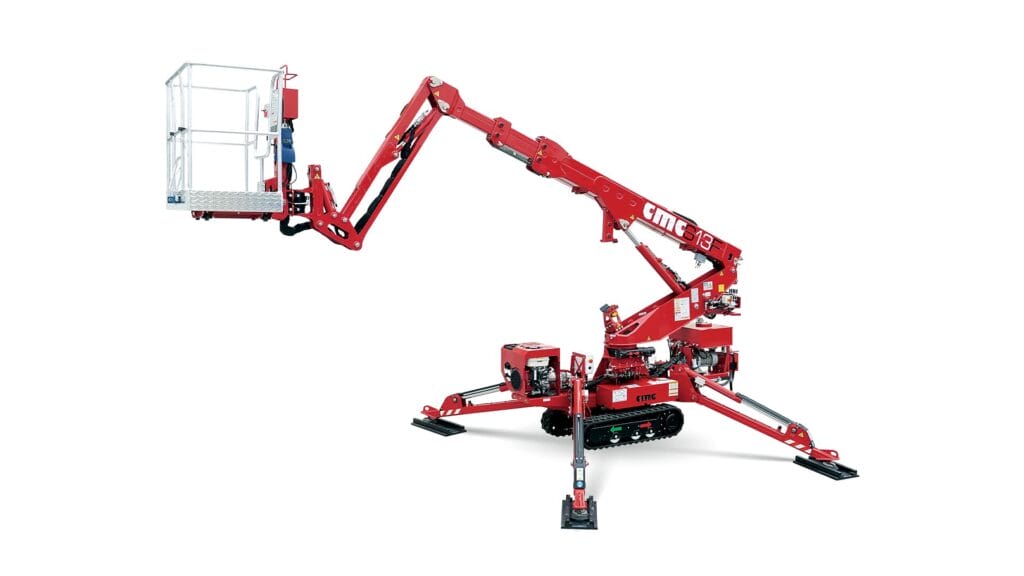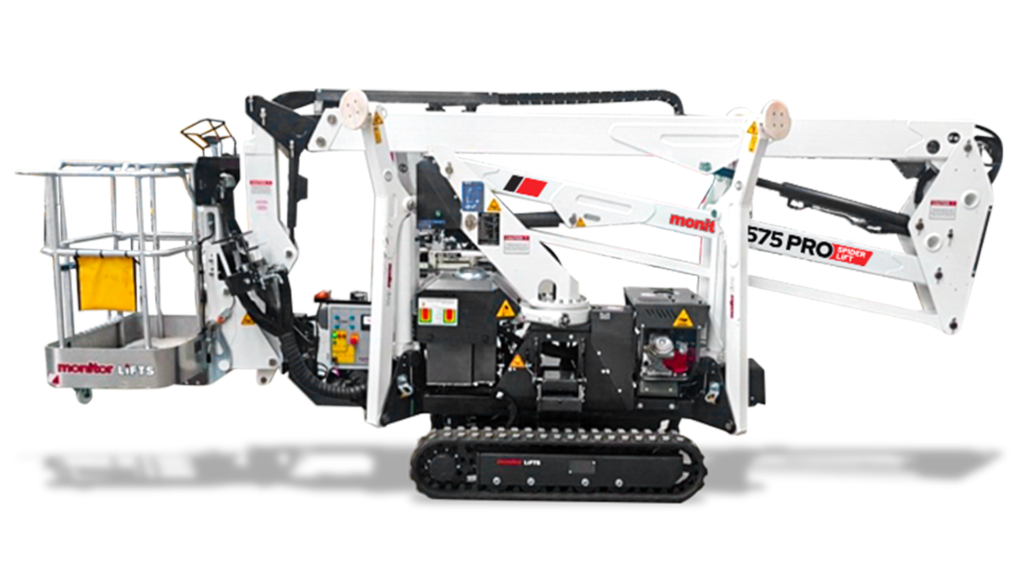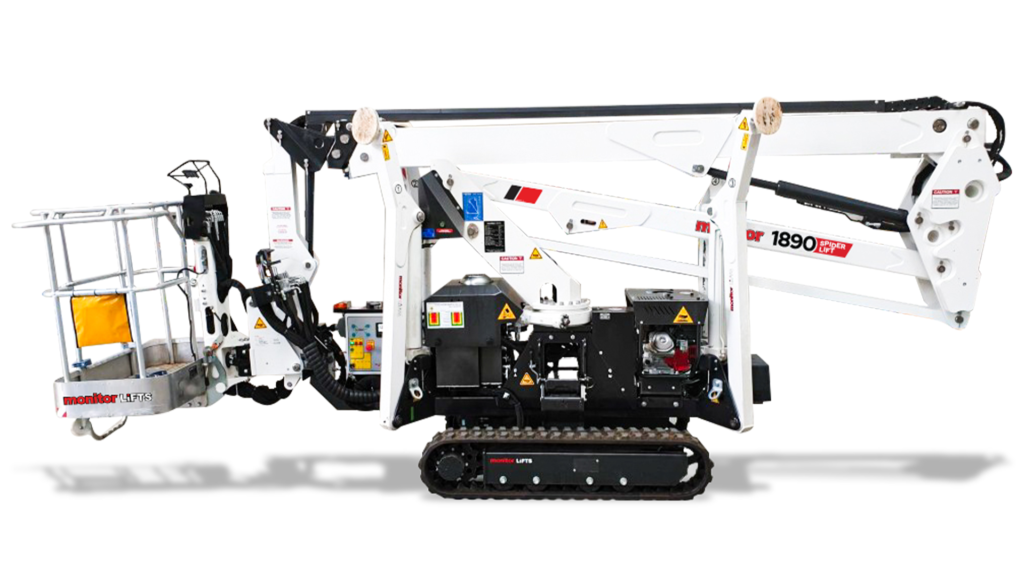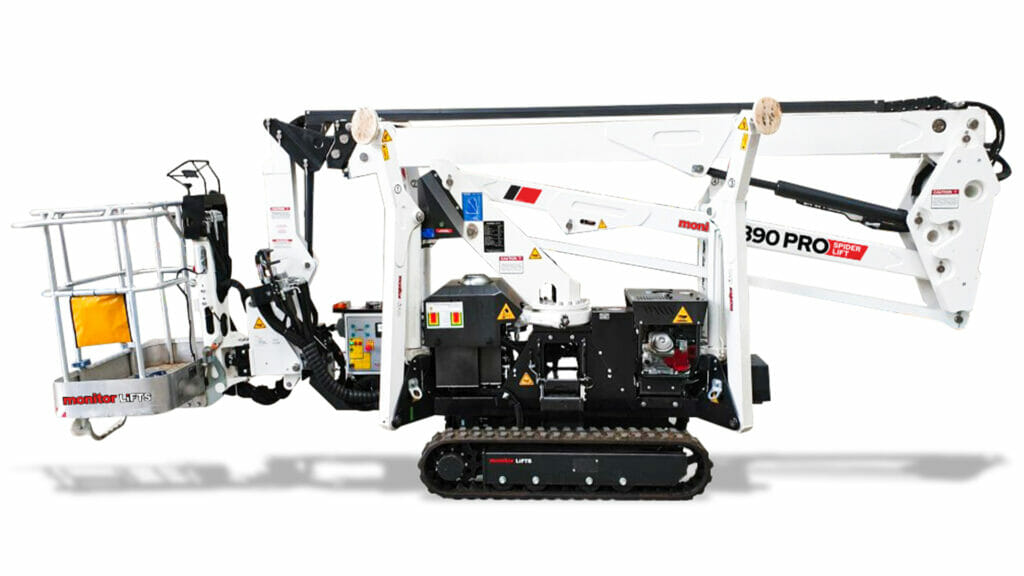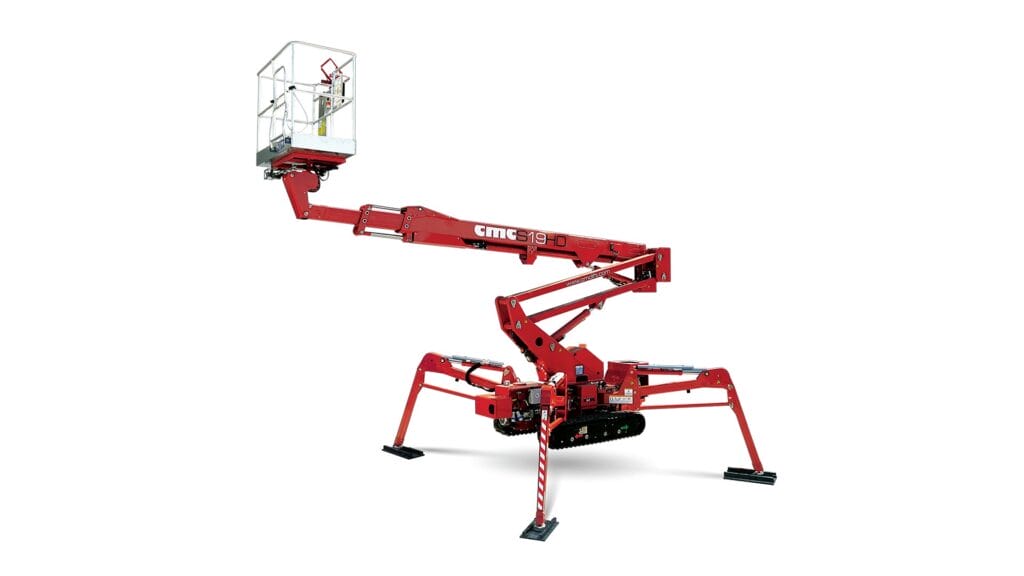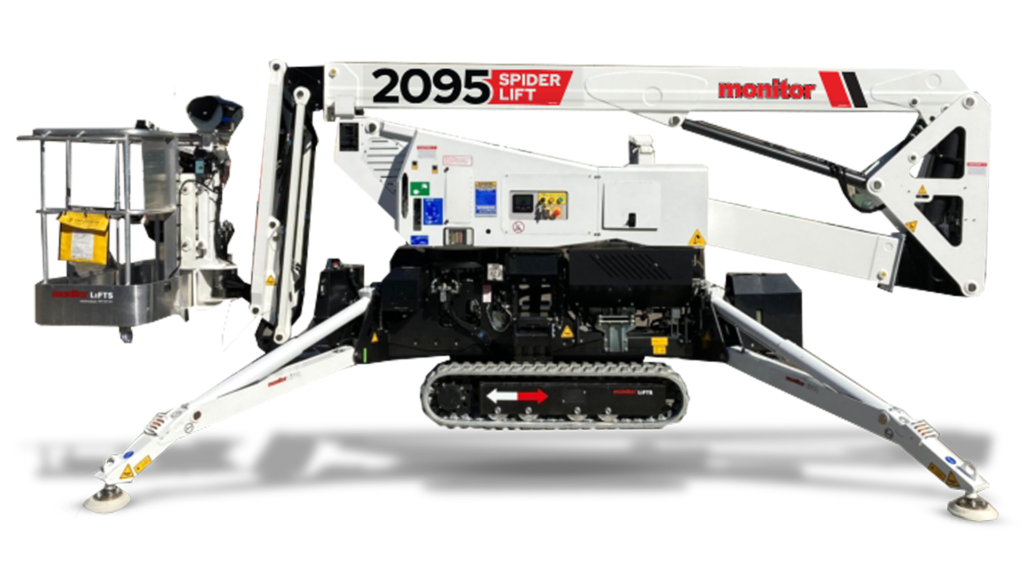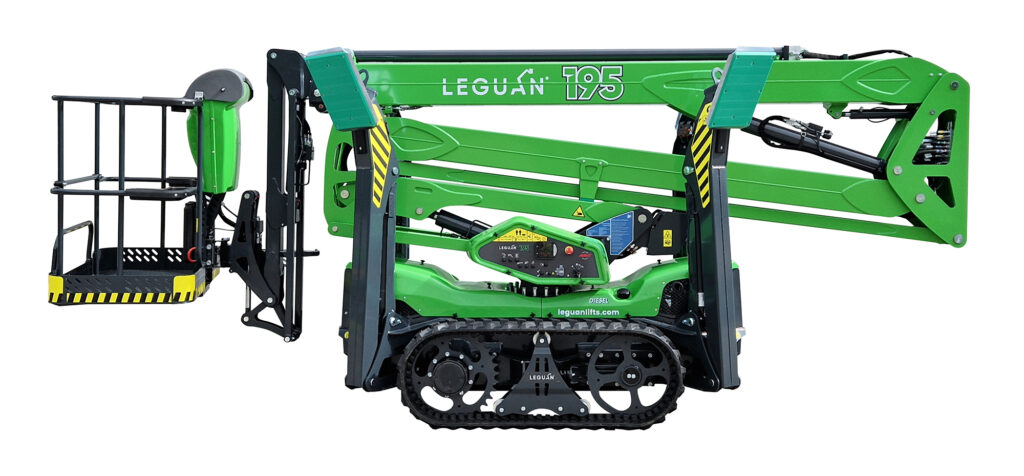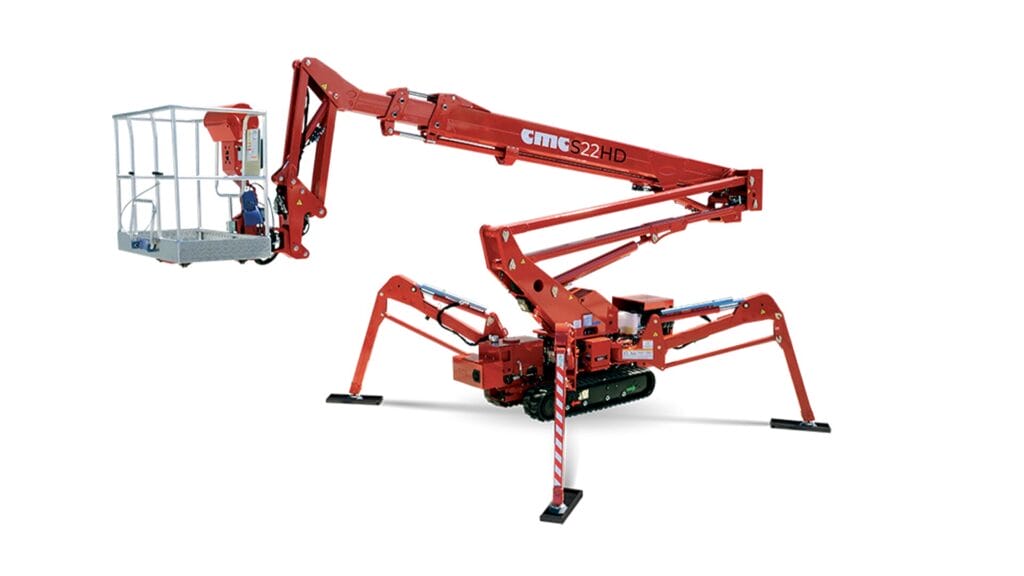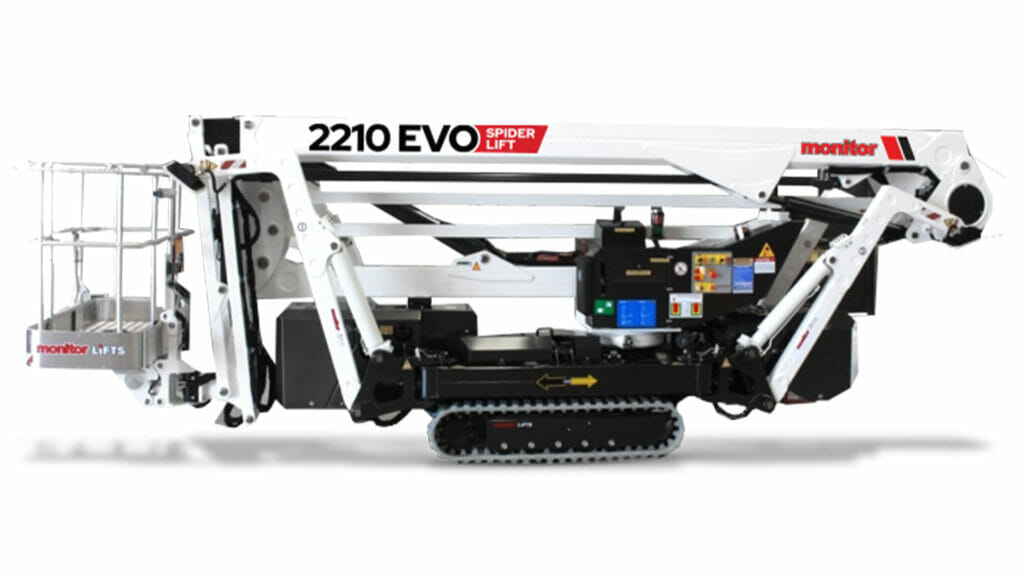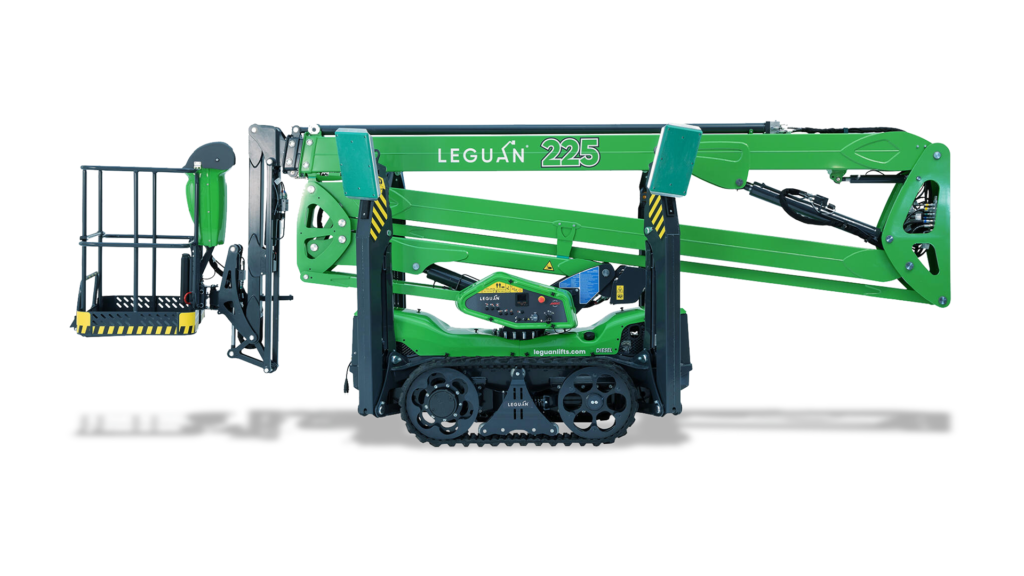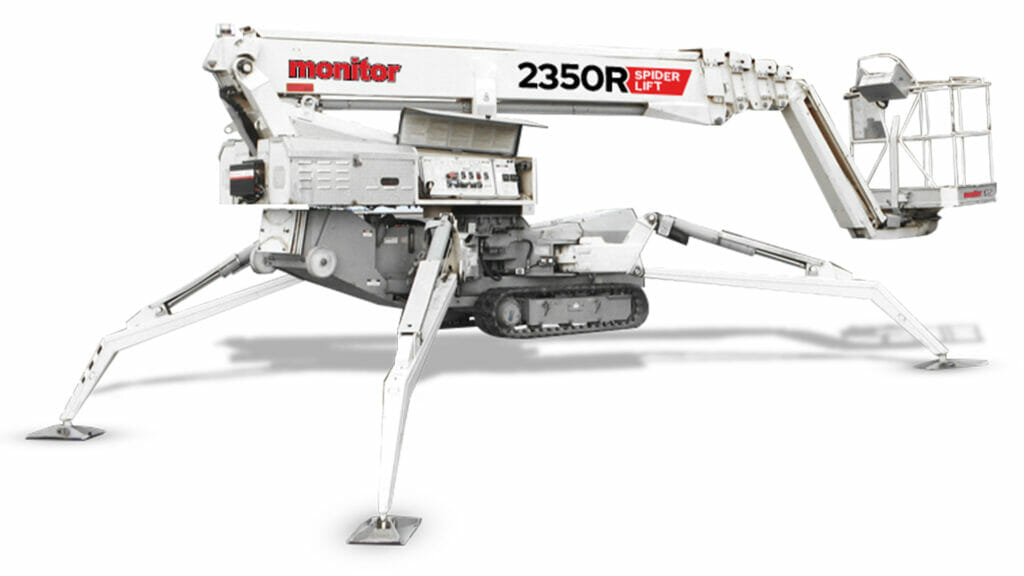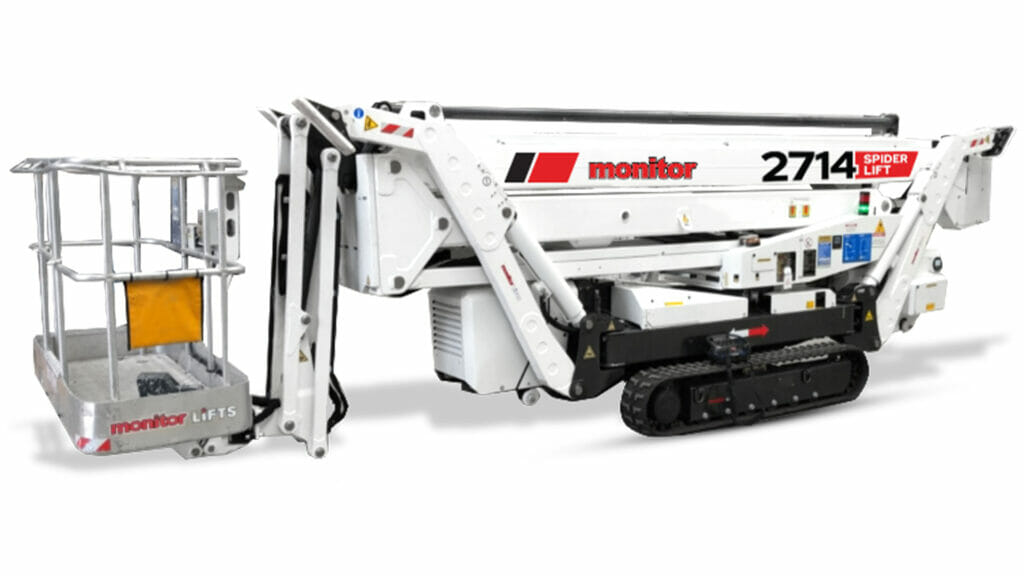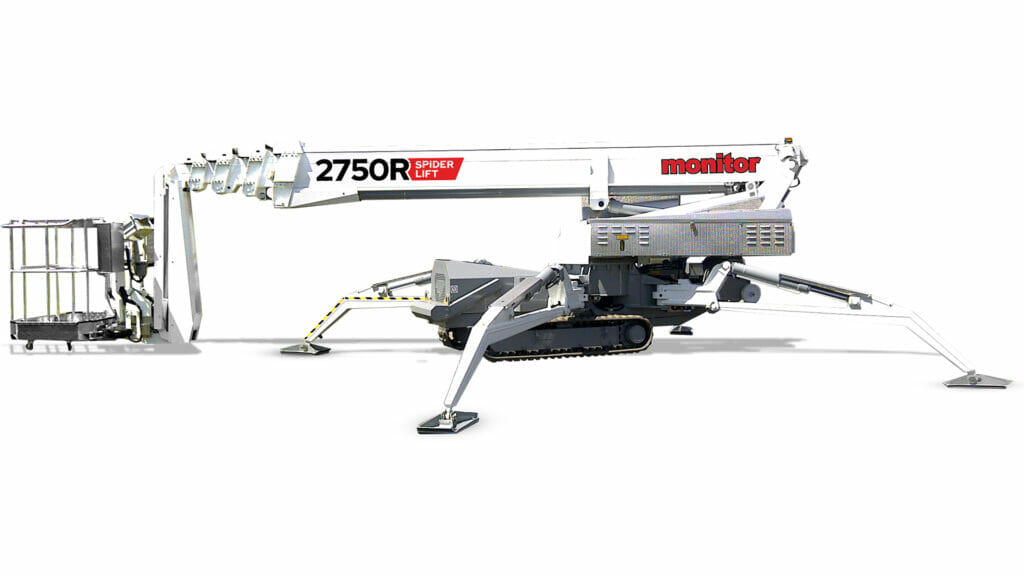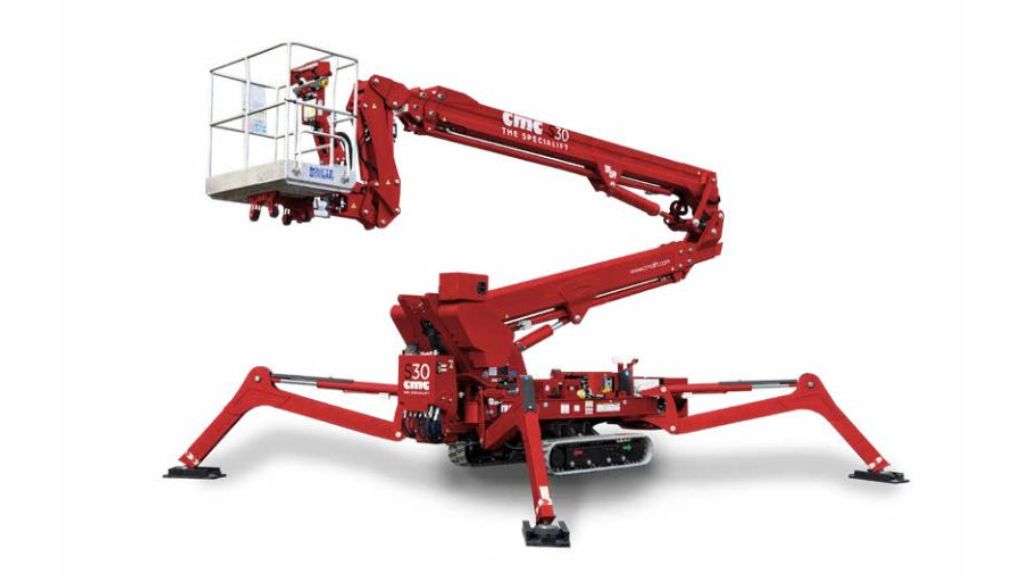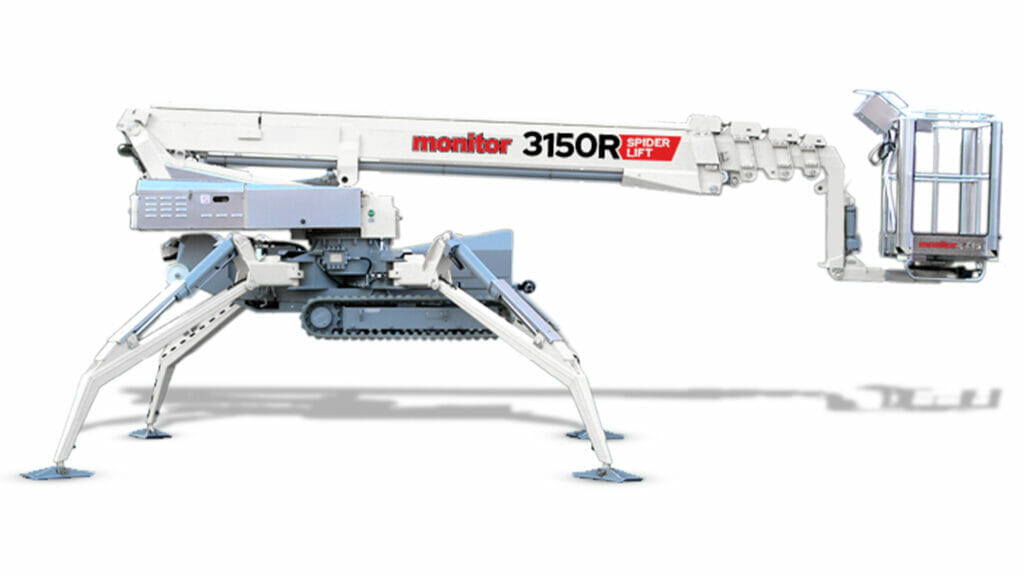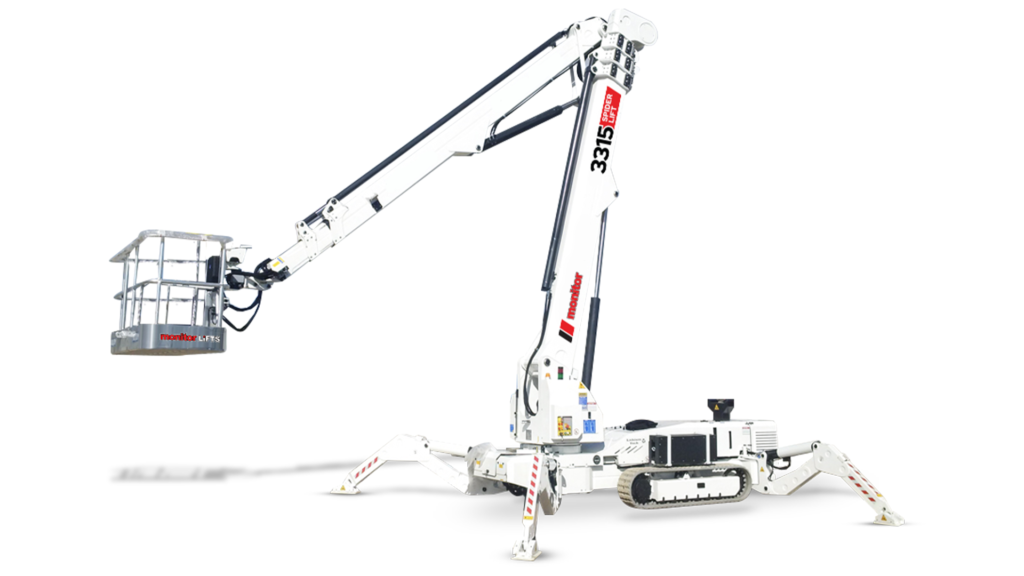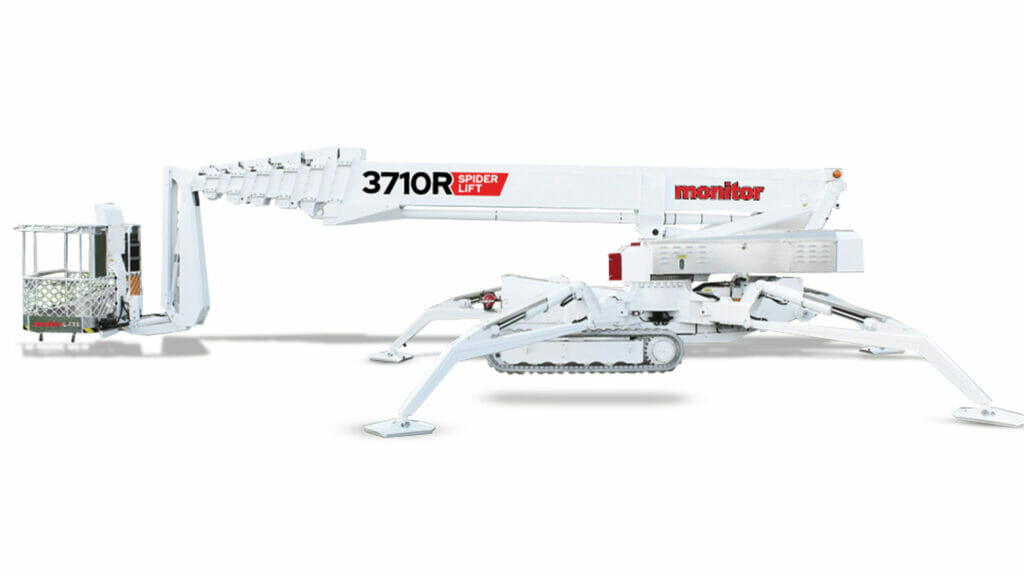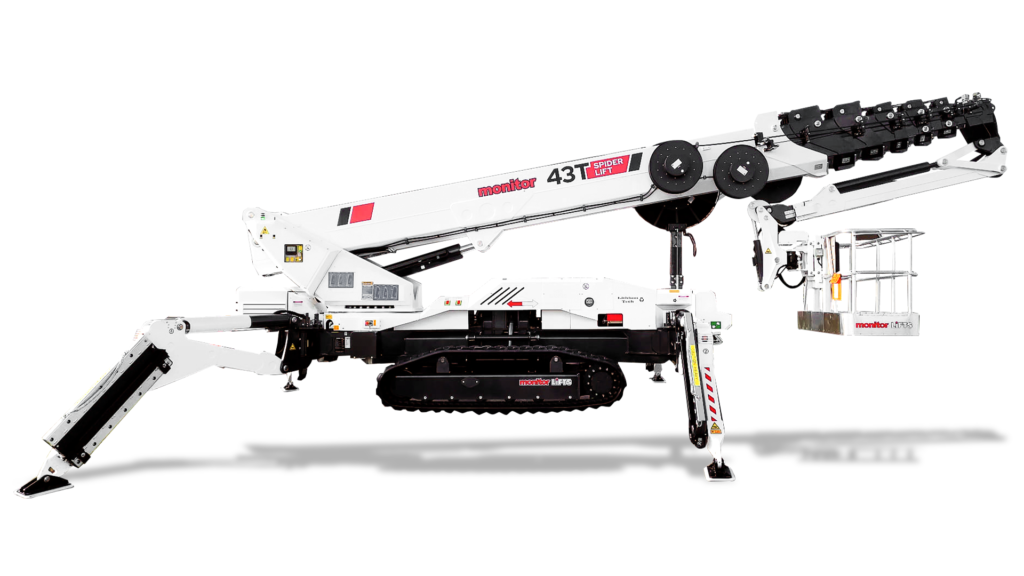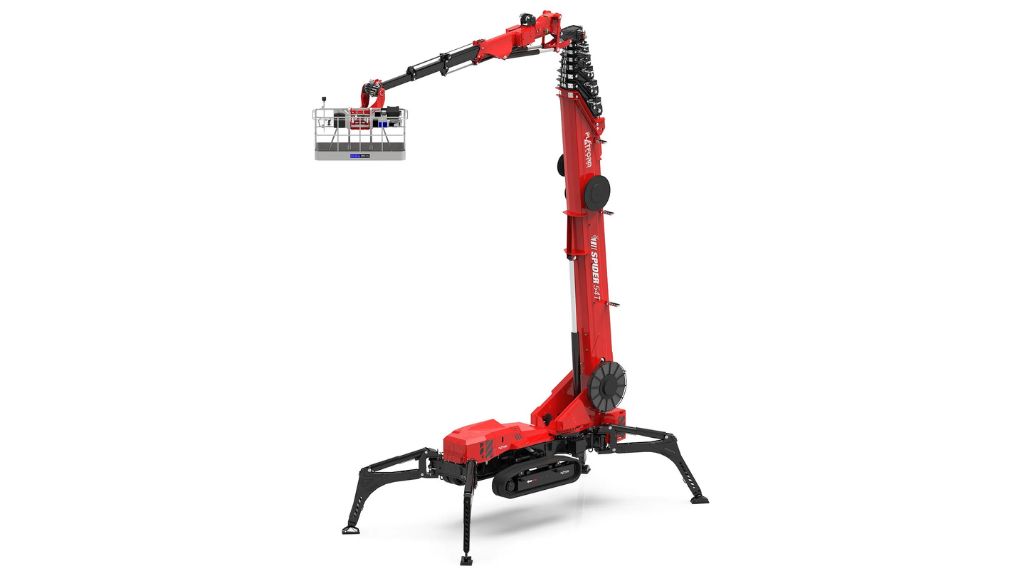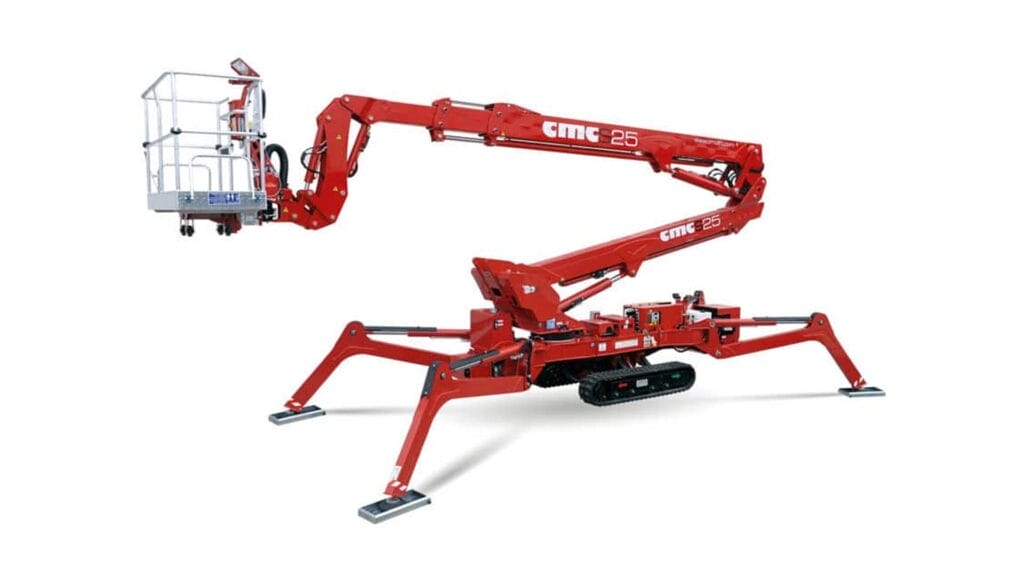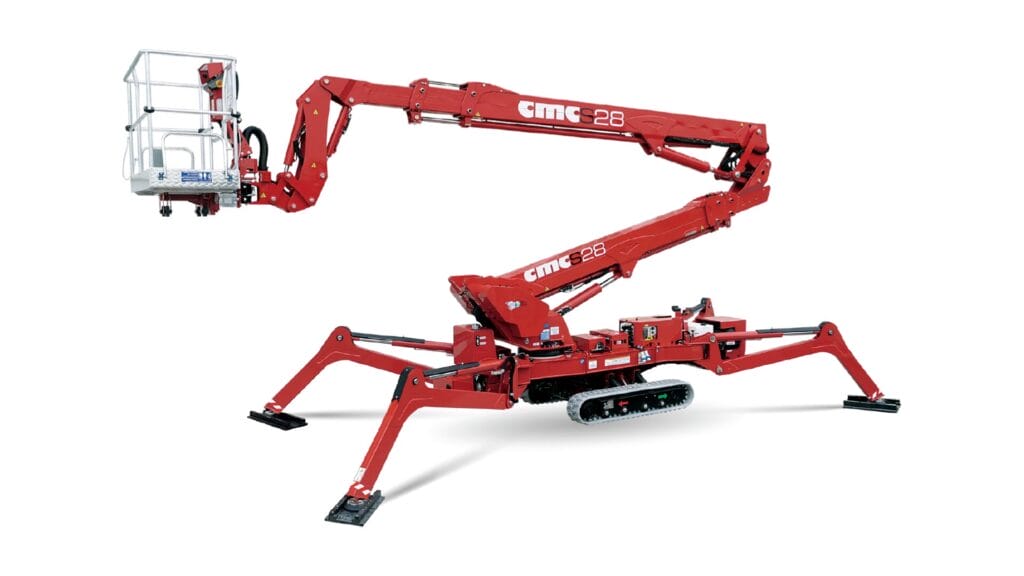Spider Lifts
Access heights more efficiently, faster, and safer with Australia’s most extensive range.
Safety, speed, and efficiency while working at height
Spider lifts are a specialised Elevating Work Platform (or EWP), designed to help people work safely at heights.
One of the most versatile types of EWP in Australia, spider lifts have many features that make them ideal for arborists. Spider lifts:
- Are lightweight
- Have narrow dimensions that allow them to fit through a doorway
- Can be set up on slopes
- Can track across rough terrain
- Are easily transportable
- Offer great working outreach and height
Importantly, for the same height, spider lifts are considerably lighter than a standard boom lift. For example, where a boom lift weighs 5.2 tonnes, a spider lift with similar specs will weigh just 1.79 tonnes. This means they have a considerable advantage in setting up in domestic areas where space is at a premium.
Can a spider lift work indoors?
Yes. Thanks to their dual power options that feature either a 240V electric motor or lithium battery pack, spider lifts can operate emissions free. This makes them ideal for working indoors as it allows the operator to work silently and allows for easy communication with the ground crew.
Their light weight and small stowed dimensions allow spider lifts to operate on fragile surfaces such as tiles, in high rise buildings, and around domestic properties without causing damage.
What industries can benefit from using spider lifts?
Spider lifts offer the right combination of safety, efficiency, and adaptability that many businesses can benefit from. These include:
Arborists
Using a spider lift helps arborists avoid the dangerous task of having to climb trees all day, every day. They help increase safety and prevent fatigue for workers.
Spider lifts can also be a more cost effective solution for arborist businesses than paying professional tree climbers.
Tradies
Painters, electricians, and plumbers can all benefit from using a spider lift. The machine avoids the need for scaffolding, offers quicker set up time, and allows tradies to access difficult areas more efficiently.
Property Maintenance
A spider lift helps property maintenance workers to clean windows from a solid platform without the use of scaffolding. Their light weight and narrow dimensions mean workers can easily access almost any application.
Telecommunications
With their rubber track design and light weight (making transport for these machines more cost effective), spider lifts can traverse rough terrain such as fire trails to access telecommunications towers.
Electrical authorities
Spider lifts can help electrical workers to operate in and around the confined spaces of a substation. And since they are towable behind most vehicles, they can be used almost anywhere.
What boom configuration works best?
Spider lifts are available in either knuckle boom or stick boom configuration. Each has its advantages.
Knuckle booms are crucial in an application which requires “up and over” reach. For example, if you’re an arborist needing the clearance to reach over a fence or other obstacle to access a work area, a knuckle boom will achieve this.
Stick boom lifts on the other hand have no tail swing, which allows you to achieve maximum outreach at a lower vertical reach in most situations. This is ideal when you need a large outreach in an area with overhead obstacles above the machine, such as a roof in an indoor application.
Is a fly jib important?
Many spider lifts can be ordered with a fly jib, a smaller boom that allows you to make finer movements at reach. By only moving the small fly jib, you won’t sway the main boom, making the job much more stable, safer, and much easier to get the job done.
What servicing is required for a spider lift?
A high quality machine will have a long service life if it’s properly taken care of. Spider lifts should have a quarterly service every 3 months, and an annual service (you guessed it!) every year.
Australian Standards also require a 10 year rebuild/recertification for spider lifts, followed by a rebuild every 5 years.
Can you set up a spider lift on steep slopes?
Yes – spider lifts are most suitable for use on sloping terrain, since they are self-propelled and allow you to track across rough and uneven terrain to reach your work site. They can be set up on slopes of up to 25 degrees without any packing, and on even steeper slopes with the correct packing technique.
What size spider lifts are available?
Spider lifts range in size from 12 metres to 43 metres vertical working reach, and from 7.5 metres to 18.7 metres horizontal working outreach. Their weight ranges from 1.8 tonne to 13.6 tonne.
In terms of basket capacity, you’ll find models ranging from one man 120Kg Max Rated Capacity (MRC) all the way up to the larger three man 330Kg MRC.
Which spider lift is best suited to the arbor industry?
There are many different factors to consider when choosing the ideal spider lift for your business. Some EWPs are best suited to domestic applications, while others are ideal for commercial work.
Download our ‘Which spider lift for which job?’ eBook to find out more.
What advantage does basket rotation give you?
Some spider lifts offer the option of a rotating basket, allowing you to approach your work at an angle. This can help you deal with obstructions, but still face directly on to the working area. A rotating basket can make it far easier to reach particular areas of a tree.
How can I tell the maximum weight a spider lift basket can handle?
There are four ways to identify the Max Rated Capacity (MRC) of a machine:
- Decal on the basket
- On the ID plate on the machine
- Envelope diagram decal (What capacity at what reach)
- Operator’s manual with your machine
To ensure you are working within the spider lift’s MRC, make sure you consider the weight of tools, harnesses and workers – in fact anything you’ll have inside the basket. Some larger machines can have a safe working load of 330Kg or more.
What optional extras are available when purchasing a spider lift
There are two broad categories of accessories which are available, depending on the exact machine you choose. These are either factory fitted, or optional extras.
Factory fitted accessories
- Self-levelling system
- Basket rotation
- Fly jib
- Load management system
- 2 or 3 speed drive
- Radio controlled remote
- Lithium battery system for emissions-free operation
- Diesel engine
- Telescopic boom
- Air and water lines from ground to basket
- 240 v electric output in basket
Optional accessories
- Anti-Entrapment Device (AED)/crush device. This has an auto stop or reverse feature when the operator comes into contact with the roof.
- Additional cover protection kit
- Stabiliser pads for use on softer ground or fragile surfaces
- Safety harnesses and lanyard
- Non-marking rubber tracks for use indoors or on concrete surfaces
- EDD (Emergency Descent Device)
- Narrower one man baskets to help navigate around trees
What vehicle can transport a spider lift?
This will largely depend on the machine you opt for. From 12 to 20 metre spider lift can be towed with a 3.5 tonne GVM vehicle, while larger lifts may require a rigid truck, with its higher towing capacity.
Yet even with a large spider lift, you won’t need to factor in the cost of a low loader with ramps and the like.
Talk to us to find the ideal spider lift for your application
Monitor imported the very first spider lifts – made by Finnish company Leguan – into Australia in 1997. Today, Monitor are Australia’s leading provider of spider lifts, and are still proudly importing quality Leguan products and two additional makes into the country.
To find out how a spider lift could offer you a more efficient access solution, call Monitor on 1800 025 024 or contact us online.
- Tamworth
- 143 Gunnedah Rd, West Tamworth NSW 2340
- (02) 6755 6000
- Sydney
- 49-50 Cassola Pl, Penrith NSW 2740
- (02) 8678 5537
- Melbourne
- 24-28 Williams Rd, Dandenong South VIC 3175
- (03) 9791 7178
- Brisbane - Caboolture
- 2 Alta Road, Caboolture QLD 4510
- Brisbane - Crestmead
- 191 Magnesium Dr, Crestmead QLD 4132
- Perth
- 11 Reihill Rd, Maddington WA 6109



